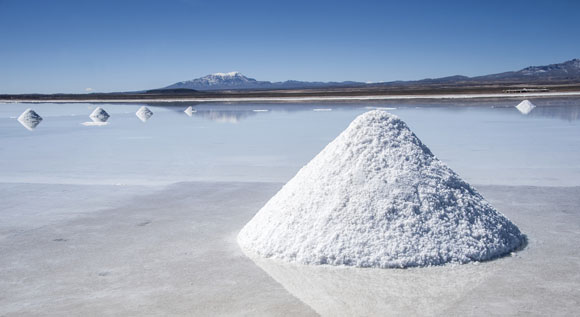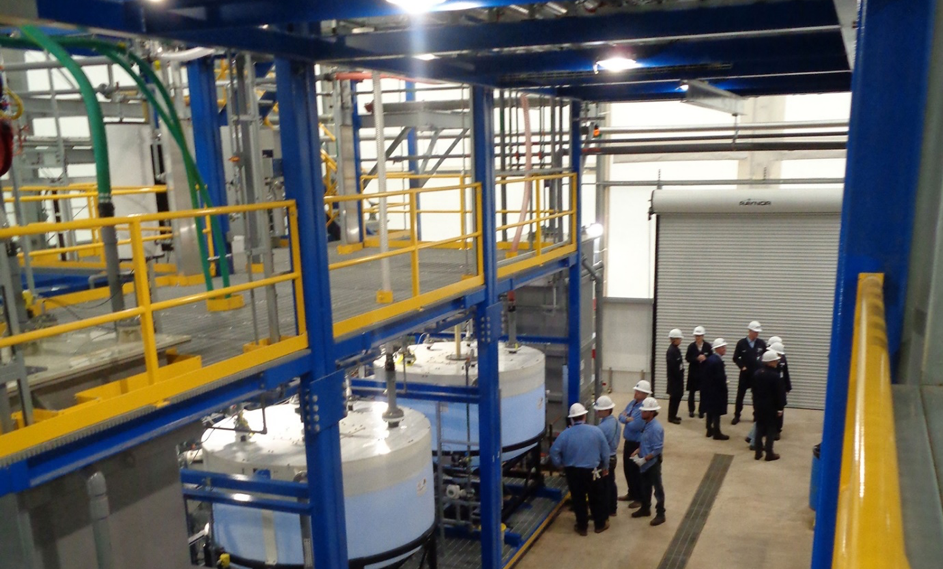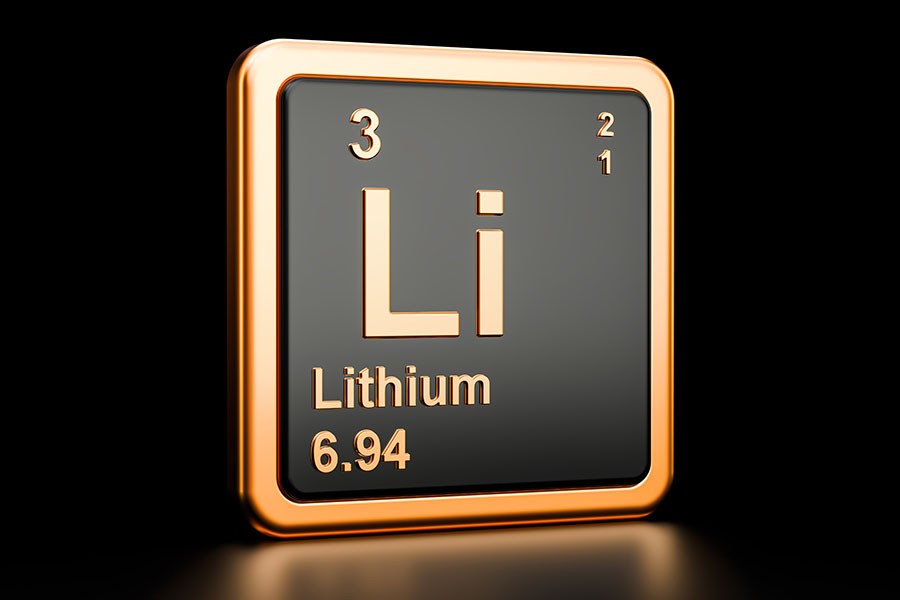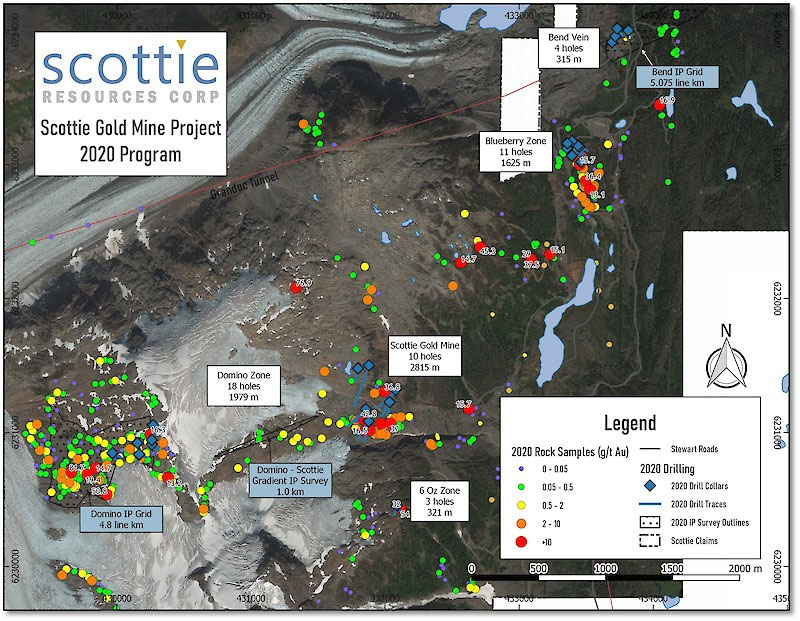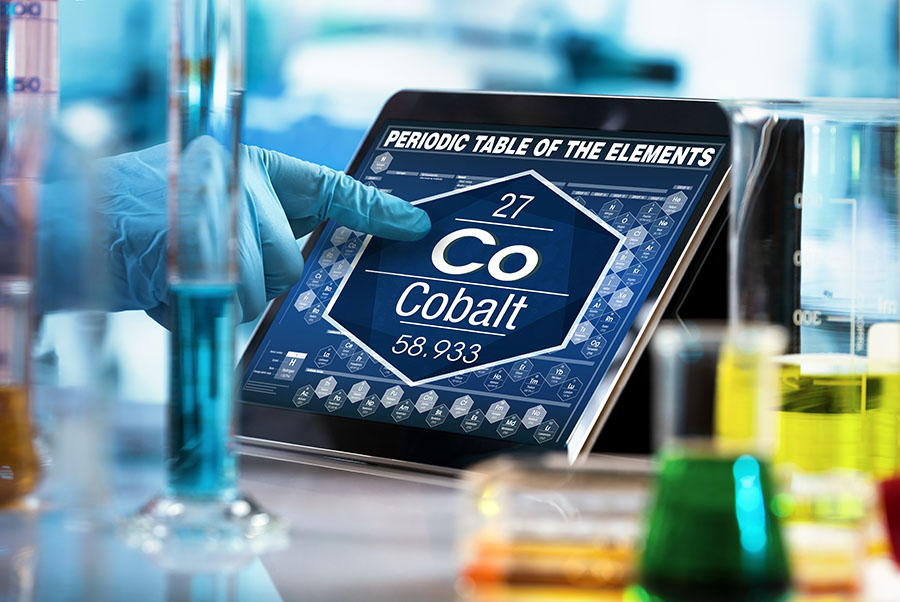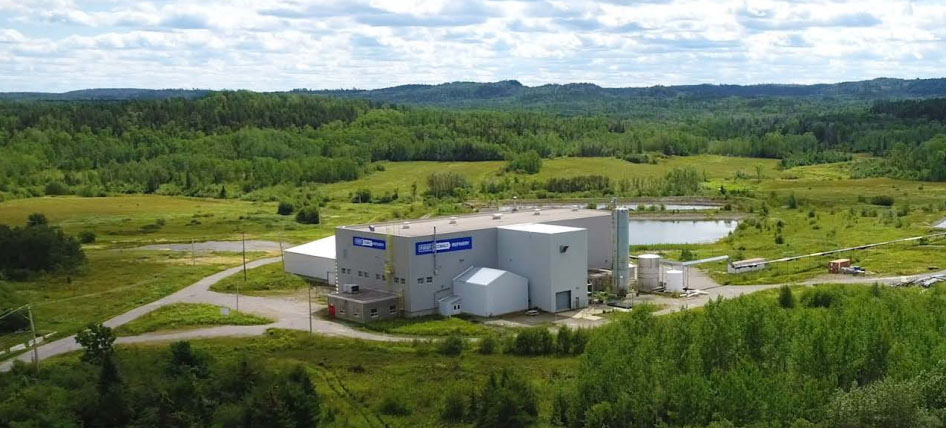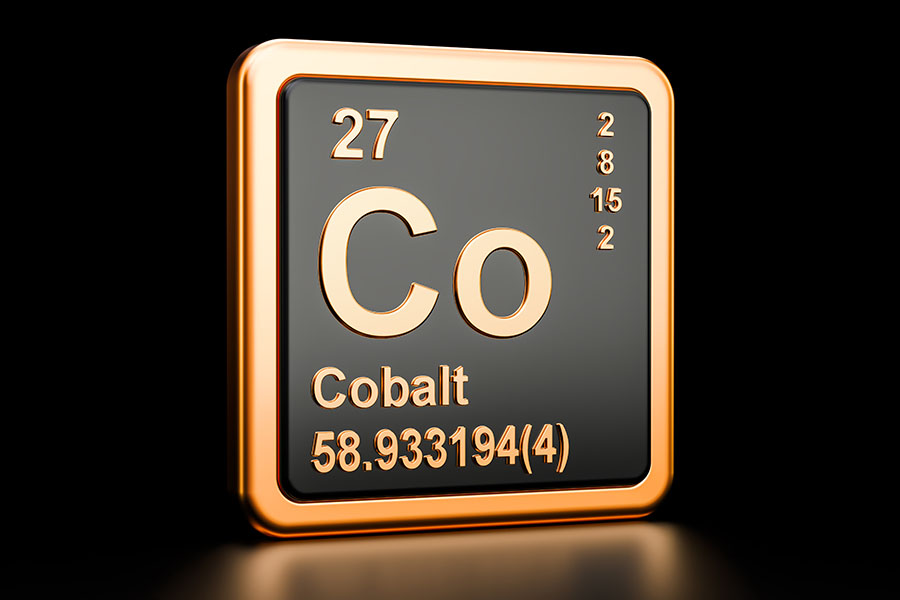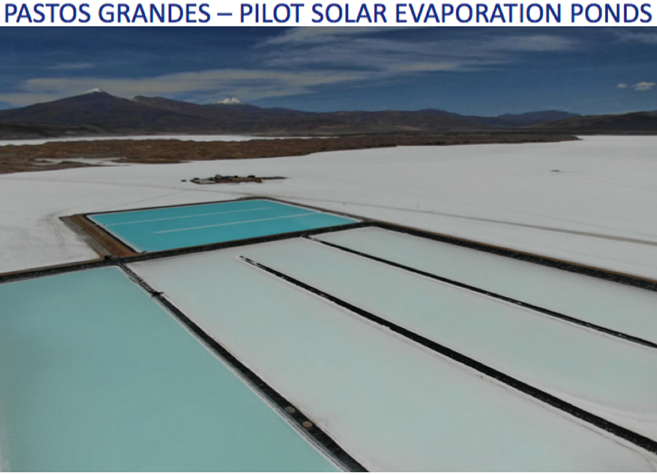Earlier this month, the mining court of Salta, Argentina, granted Millennial Lithium Corp.'s (ML:TSX.V; MLNLF:OTCMKTS) Argentine subsidiary four mining licenses on its 100%-owned Pastos Grandes project in Salta province. Readers may recall that Millennial recently delivered a bank feasibility study (BFS) and expects to reach initial production in 2022 (subject to funding and permits), ramping up to nameplate capacity of 24,000 tonnes lithium carbonate equivalent (LCE)/year by mid-decade.
Farhad Abasov, president & CEO, commented: "Millennial is pleased to have received four mining licenses which comprise ~97% of the property area at Pastos Grandes. Millennial expects the final license to be granted in the near future. The company continues to actively advance its three-tonne-per-month lithium carbonate plant and pilot evaporation ponds. Millennial is moving forward with financing, off-take and other key strategic initiatives with large industry players."
This news comes on the heels of the October announcement that the national mining secretary of Argentina granted a federal fiscal stability certificate (FFSC) for Pastos Grandes. The certificate outlines the tax regime, plus additional benefits bestowed on the project, and officially confirms a reduction in the corporate income tax rate from 30% to 25%.

CEO Abasov commented, "The granting of the FFSC assures the tax and additional benefit terms under which we can operate a lithium carbonate production operation. Receipt of the FFSC confirms our confidence that mining projects in Salta have the support of all levels of government."
This means that, like Australia-listed Galaxy Lithium's (GXY:ASX) Sal de Vida and Lithium Americas Corp. (LAC:TSX; LAC:NYSE)/Jiangxi Ganfeng Lithium Co. Ltd.'s (002460:CH) 50/50 joint venture (JV) (Cauchari-Olaroz) brine projects in Argentina, Millennial's Pastos Grandes has both a BFS and fiscal stability package. At a time when many lithium brine projects in Chile and Argentina are moving very slowly—or are stalled—it's clear that Millennial's management team is working closely with all stakeholders to successfully advance Pastos Grandes.
Unlike most peers, Millennial has been blessed with ample cash liquidity. Even today it's sitting on ~$23 million, enough to last well into 2021 if necessary.
Exciting times ahead

Next is the lining up of strategic/financial partners, signing offtake agreements, raising construction capital, construction of ponds and plant, and first production—expected in 2022. That's about 12–18 months behind Lithium Americas' JV project. Importantly, Millennial will greatly benefit from valuable lessons learned from Lithium Americas' and Galaxy's development progress, as well as expansions underway at Livent Corp. (LTHM:NYSE) and Orocobre Ltd. (ORL:TSX; ORE:ASX).
Chile's Albemarle Corp. (ALB:NYSE) and SQM (SQM:NYSE), and Argentina's Livent, Orocobre, Galaxy and Lithium Americas are public companies. Problems with ponds or processing facilities at those companies will become known to Millennial's technical team. Therefore, there's a decent chance that mishaps at other projects can be avoided. Sometimes there are benefits to not being a first mover.
In addition to benefiting from the learning curve others are ascending, Millennial will enjoy regional infrastructure that is being built and/or expanded: roads, rail, power lines, natural gas pipelines, etc. Mining equipment and service providers are setting up offices to serve companies including Lithium Americas/Ganfeng, Livent, Orocobre, Galaxy, POSCO (PKX:NYSE), Neo Lithium Corp. (NLC:TSX.V), Argosy Minerals Ltd. (AGY:ASX), Advantage Lithium Corp. (AAL:TSX.V; AVLIF:OTCQX) and Millennial.

Readers should not take for granted the fact that Millennial owns 100% of its project. By contrast, Advantage Lithium owns 75% of its flagship project, Argosy Minerals owns 77.5%, Lithium Americas owns 50%, and Orocobre owns 66.5% of their respective projects.
Owning 100% of Pastos Grandes, with a BFS and fiscal stability pact in place, greatly enhances management's ability to fund construction. Selling a meaningful portion of the project could raise a substantial amount of capital. That, combined with debt financing and (possible) advance payments from offtake agreements, would minimize the need for excessive equity capital.
Important derisking events to continue in H1 2020
In speaking with CEO Farhad Abasov, he and his board believe that news on one or more parts of a funding package could come within three to six months. Management is speaking with global industrial companies, some of which have already done substantial due diligence.
A few interested parties would like to see a staged ramp-up to minimize capex, so instead of moving to 24,000 tonnes LCE/year by 2025–26, [the company would get] to 10,000 tonnes and remain at that level, only expanding if/when market conditions warrant. In that scenario, capex could be reduced from US$448.2 million to under US$300 million. Then, operating cash flow could be deployed to partially fund an expansion from 10,000 to 24,000 tonnes at a later date.
Also, a few prospective partners have lithium extraction/processing technologies, or access to technologies, that (if they work at commercial scale) could further optimize Millennial's operating flow sheet, potentially enhancing project economics. In some cases, the need for evaporation ponds would be eliminated.

Giant auto and battery manufacturers can very comfortably afford to fund projects like Millennial's, with capex requirements of around half a billion US dollars. Although we haven't seen much of that yet, it's coming. Look no further than Benchmark Mineral Intelligence's running tally of lithium-ion battery mega-factories. Benchmark Mineral Intelligence has been tracking the number of global mega-factories for years. The number has soared, currently standing at 115.
Ranked by size, the top 10 global automakers—Volkswagen, Daimler, Toyota, Ford, BMW, GM, Hyundai, Tesla, Honda and Ferrari—have an average enterprise value (EV) of about US$135 billion. Any of these companies could fund even the largest lithium projects in the world. Yet, I estimate that fewer than ten new projects, brine, hard rock or clay-hosted, (>20,000 tonnes LCE/year) are likely coming online by 2025.
Lithium prices below US$10,000/tonne unlikely to last
One of the main reasons for such negative sentiment in the lithium junior space has been the decline in lithium prices from unsustainably high levels above US$20,000/tonne. However, now below US$10,000/tonne, prices may have overshot to the downside. Many analysts and pundits believe that 2020 or 2021 will mark a bottom in the three-year slide in prices.

In the chart below, Roskill demonstrates why prices are likely to improve. At current spot levels, all advanced-stage hard rock and brine projects in the pipeline come in at under a 16% internal rate of return (IRR). Some projects have negative IRRs; the average is closer to 5% than 10%.
Millennial is poised for a great decade, and the 2030s could be even better. Management expects Pastos Grandes to be next in line in Argentina after Lithium Americas/Ganfeng. Any project, anywhere in the world, that comes to market and ramps up over the next five years should enjoy strong demand for its lithium offerings.
A major global supply source (about 1/3 of the market) is experiencing unexpected bottlenecks, uncertainty and delays. In Chile's Atacama salar, both Albemarle and SQM had planned massive expansions to lithium carbonate production, upward of a tripling, from 2018 to 2021. Two years into these expansions, annual production has hardly budged.

More uncertainty and caution is expected as local communities have convinced a Chilean environmental court to uphold claims of excessive water use by SQM and Albemarle, seriously threatening their expansion plans. Therefore, this news should be supportive of lithium prices in the mid-to-longer term.
Conclusion
Millennial Lithium has an excellent asset, more advanced (BFS-stage) than all but two or three global brine projects, with relatively low upfront capex compared to other mining and metals projects, producing a metal with expected annual demand growth of 15% (or more) over the next 10 years. Millennial has over $20 million in cash on its balance sheet.
Not many significant projects could possibly commence production by 2022—not many at all, besides Lithium Americas and Galaxy. No new operations are coming in Chile in the next three to five years, and only a small handful in North America (Bacanora Minerals Ltd., Standard Lithium Ltd. [SLL:TSX.V; STLHF:OTCQX]). If lithium demand really takes off, few companies on the planet are better positioned to capture that need than Millennial Lithium.

Adjusted for ownership interests in their respective flagship projects, all but Lithium Americas trade at similar valuations. Any of these companies that successfully advance toward production (secure cornerstone investor[s], offtake agreement[s], commencement of construction, etc.) offer the potential for significant share price gains. Notice that Lithium Americas' valuation is about four times that of the others.
Millennial is trading at just one-fourth the valuation, but could be only 12–18 months behind Lithium Americas. Is this 75% discount warranted? Lithium Americas is fully funded on its 50% JV project and construction is well underway. Millennial owns 100% of its project, has ample cash liquidity, no debt, a BFS, four of five mining licenses have been granted, and has secured a signed federal fiscal stability certificate.
If one believes, like I do, that lithium prices will rebound, Millennial Lithium could be an excellent way to benefit from the rebound.
Peter Epstein is the founder of Epstein Research. His background is in company and financial analysis. He holds an MBA degree in financial analysis from New York University's Stern School of Business.
[NLINSERT]Streetwise Reports Disclosure:
1) Peter Epstein's disclosures are listed below.
2) The following companies mentioned in the article are billboard sponsors of Streetwise Reports: None. Click here for important disclosures about sponsor fees. The information provided above is for informational purposes only and is not a recommendation to buy or sell any security.
3) Statements and opinions expressed are the opinions of the author and not of Streetwise Reports or its officers. The author is wholly responsible for the validity of the statements. The author was not paid by Streetwise Reports for this article. Streetwise Reports was not paid by the author to publish or syndicate this article. Streetwise Reports requires contributing authors to disclose any shareholdings in, or economic relationships with, companies that they write about. Streetwise Reports relies upon the authors to accurately provide this information and Streetwise Reports has no means of verifying its accuracy.
4) The article does not constitute investment advice. Each reader is encouraged to consult with his or her individual financial professional and any action a reader takes as a result of information presented here is his or her own responsibility. By opening this page, each reader accepts and agrees to Streetwise Reports' terms of use and full legal disclaimer. This article is not a solicitation for investment. Streetwise Reports does not render general or specific investment advice and the information on Streetwise Reports should not be considered a recommendation to buy or sell any security. Streetwise Reports does not endorse or recommend the business, products, services or securities of any company mentioned on Streetwise Reports.
5) From time to time, Streetwise Reports LLC and its directors, officers, employees or members of their families, as well as persons interviewed for articles and interviews on the site, may have a long or short position in securities mentioned. Directors, officers, employees or members of their immediate families are prohibited from making purchases and/or sales of those securities in the open market or otherwise from the time of the interview or the decision to write an article until three business days after the publication of the interview or article. The foregoing prohibition does not apply to articles that in substance only restate previously published company releases.
Author's Disclosures: The content of this interview is for information only. Readers fully understand and agree that nothing contained herein, written by Peter Epstein of Epstein Research [ER], (together, [ER]) about Millennial Lithium., including but not limited to, commentary, opinions, views, assumptions, reported facts, calculations, etc. is not to be considered implicit or explicit investment advice. Nothing contained herein is a recommendation or solicitation to buy or sell any security. [ER] is not responsible under any circumstances for investment actions taken by the reader. [ER] has never been, and is not currently, a registered or licensed financial advisor or broker/dealer, investment advisor, stockbroker, trader, money manager, compliance or legal officer, and does not perform market making activities. [ER] is not directly employed by any company, group, organization, party or person. The shares of Millennial Lithium are highly speculative, not suitable for all investors. Readers understand and agree that investments in small cap stocks can result in a 100% loss of invested funds. It is assumed and agreed upon by readers that they will consult with their own licensed or registered financial advisors before making any investment decisions.
AX1 Capital Corp. retained Epstein Research for a six-month advertising campaign. AX1 Capital is closely affiliated with Millennial Lithium. It is 100%-owned by a single individual who has a contract for services with Millennial Lithium. This individual owns 150,000 restricted share units and a similarly modest number of warrants in the company. Therefore, readers should consider Epstein Research [ER] to be biased in favor of Millennial Lithium. Peter Epstein of [ER] does not own any shares, warrants, options or restricted share units of Millennial Lithium.
Readers understand and agree that they must conduct their own due diligence above and beyond reading this article. While the author believes he's diligent in screening out companies that, for any reasons whatsoever, are unattractive investment opportunities, he cannot guarantee that his efforts will (or have been) successful. [ER] is not responsible for any perceived, or actual, errors including, but not limited to, commentary, opinions, views, assumptions, reported facts & financial calculations, or for the completeness of this article or future content. [ER] is not expected or required to subsequently follow or cover events & news, or write about any particular company or topic. [ER] is not an expert in any company, industry sector or investment topic.



